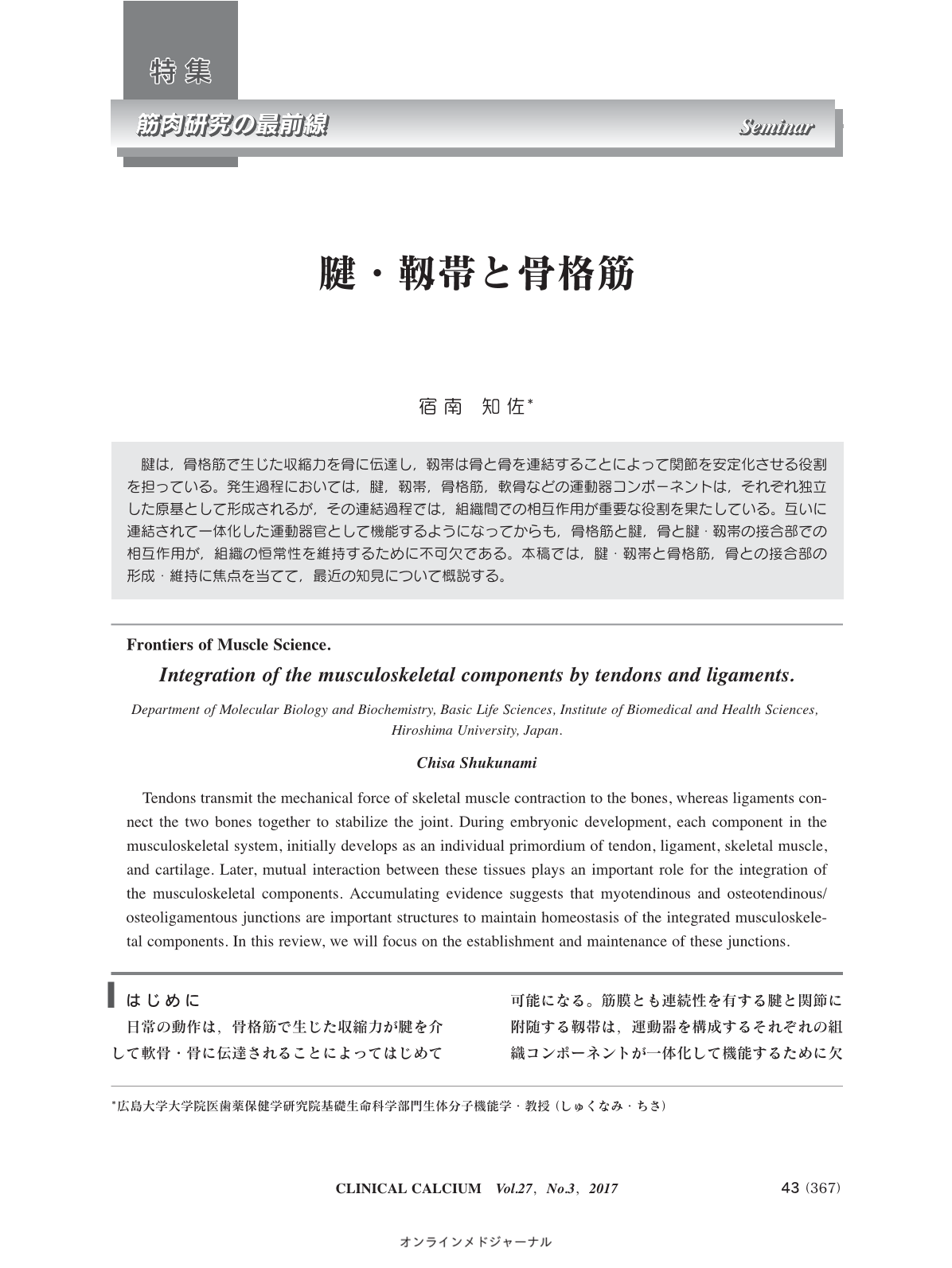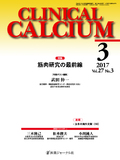Japanese
English
- 有料閲覧
- Abstract 文献概要
- 1ページ目 Look Inside
- 参考文献 Reference
腱は,骨格筋で生じた収縮力を骨に伝達し,靱帯は骨と骨を連結することによって関節を安定化させる役割を担っている。発生過程においては,腱,靱帯,骨格筋,軟骨などの運動器コンポーネントは,それぞれ独立した原基として形成されるが,その連結過程では,組織間での相互作用が重要な役割を果たしている。互いに連結されて一体化した運動器官として機能するようになってからも,骨格筋と腱,骨と腱・靱帯の接合部での相互作用が,組織の恒常性を維持するために不可欠である。本稿では,腱・靱帯と骨格筋,骨との接合部の形成・維持に焦点を当てて,最近の知見について概説する。
Tendons transmit the mechanical force of skeletal muscle contraction to the bones, whereas ligaments connect the two bones together to stabilize the joint. During embryonic development, each component in the musculoskeletal system, initially develops as an individual primordium of tendon, ligament, skeletal muscle, and cartilage. Later, mutual interaction between these tissues plays an important role for the integration of the musculoskeletal components. Accumulating evidence suggests that myotendinous and osteotendinous/osteoligamentous junctions are important structures to maintain homeostasis of the integrated musculoskeletal components. In this review, we will focus on the establishment and maintenance of these junctions.



